Table of contents
Savoy cabbage, called Wirz in Swiss German, is a head-forming cabbage with distinctly curly, wavy leaves. Brassica oleracea var. sabauda has a high content of glucosinolates when raw, which are reduced by fermentation or cooking. Welschkraut is also available organically.
Use in the kitchen
Savoy cabbage has a much more subtle taste than its relatives white cabbage and red cabbage. It can also be used even if it does not yet have a firm head. The leaves of Savoy cabbage are more tender than those of most other types of cabbage, which is why it takes much less time to cook. As the outer dark green Savoy cabbage leaves are often bitter, it is better to avoid them. To better preserve the greenish color of the leaves, briefly blanch them and then cool them in ice water.
Savoy cabbage is very versatile in the kitchen. Savoy cabbage tastes good raw and cooked in all possible forms, whether boiled, steamed, fried or baked. You can easily conjure up a quick vegetable side dish from the cabbage by cooking savoy cabbage strips in salted water for a few minutes. It is also perfect in vegetable stir-fries, risotto, stews, casseroles (e.g. with potatoes and mushrooms) and soups (e.g. with carrots and celeriac). Savoy cabbage also tastes excellent in curries (e.g. with various vegetables and lentils), in a spicy sauce with pasta, on a quiche, in a wok or processed into a puree. Large savoy cabbage leaves are ideal for vegetarian and vegan cabbage rolls (also called savoy cabbage rolls or savoy cabbage roulades), filled with e.g. mushrooms, rice, couscous, tofu, seitan or soy mince. Another popular dish is creamed savoy cabbage, which can easily be prepared vegan (see the following recipe). For a cozy evening, savoy cabbage leaves marinated with all kinds of spices can be baked in the oven to make chips.
Can you eat savoy cabbage raw? If you have a healthy stomach, you can eat savoy cabbage raw. However, for sensitive people, savoy cabbage (raw savoy cabbage) can be hard on the stomach and cause flatulence. If you still eat savoy cabbage raw, you should buy fresh organic savoy cabbage and wash its curly leaves thoroughly before eating. It is best to remove the stalk for savoy cabbage salad (raw) or a smoothie (e.g. with orange and ginger).
Since it is generally true that savoy cabbage is edible raw but very difficult to digest, a popular way to prepare savoy cabbage is to ferment it. For example, with classic spices such as salt, bay leaves, juniper berries, or something a little spicier with jalapeños, onion, garlic, pepper, oregano, vine leaves and cumin seeds. Savoy cabbage is also suitable for making a type of Korean kimchi (gimchi), the original is made with Chinese cabbage.
A variety of spices and herbs go well with savoy cabbage: curry powder, paprika powder or even thyme for heartier dishes or nutmeg, parsley and chives for milder dishes. Caraway, anise, fennel seeds or dill seeds not only give cabbage dishes a special flavour, but also reduce the bloating effect of the cabbage somewhat.
Recipe for vegan creamed savoy cabbage with smoked tofu
Ingredients (for 2 people): 400 g savoy cabbage (raw, organic), 150 g smoked tofu, 1 onion, 100 ml white wine (dry), 100 ml oat cream, 2 tbsp rapeseed oil, 1 tsp agave syrup, 1 lemon (organic), 1 pinch of nutmeg, a little salt andpepper.
Preparation: Remove the outer leaves of the savoy cabbage and wash the rest thoroughly. Quarter the cabbage and cut out the stalk. Cut the quarters into bite-sized pieces. Cut the smoked tofu into small cubes. Peel the onion and dice finely. Fry the tofu cubes in a pan heated with 1 tablespoon of rapeseed oil for approx. 3 minutes, remove and set aside. Add another 1 tablespoon of rapeseed oil to the pan and fry the savoy cabbage strips in it for approx. 4 minutes. Add the onion cubes and sauté for approx. 1 minute until translucent. Deglaze with white wine and oat cream, add agave syrup and season with salt, pepper and nutmeg. Cover and simmer over medium heat for approx. 20 minutes. Rinse the organic lemon with hot water, dry it, grate the peel and squeeze out the juice. Remove the vegan creamed savoy cabbage from the heat and stir in some of the lemon peel and lemon juice. Add more to taste and season with salt and pepper. Add tofu cubes to the vegan dish immediately before serving.
You can find vegan recipes with savoy cabbage under the note: " Recipes that have the most of this ingredient ".
| Not only vegans or vegetarians should read this: Vegans often eat unhealthily. Avoidable nutritional errors. |
Shopping - Storage
When is savoy cabbage in season ? Since there is early savoy cabbage, summer savoy cabbage, autumn savoy cabbage and winter savoy cabbage and it is easy to store, savoy cabbage is available all year round in most supermarkets (e.g. Coop, Migros, Denner, Volg, Spar, Aldi, Lidl, Rewe, Edeka, Hofer, Billa). Organic supermarkets (e.g. Alnatura, Denn's Biomarkt) also sell the cabbage all year round, in organic quality (bio). You can buy local and very fresh savoy cabbage at many weekly markets.
Storage tips
Savoy cabbage is best stored in the vegetable compartment of the refrigerator. Summer savoy cabbage will keep for two to three days. Winter savoy cabbage will stay fresh for up to two weeks. Savoy cabbage can also be frozen. To do this, you should clean it, blanch it briefly in boiling salted water and drain well. The savoy cabbage portions are then placed in airtight freezer bags or food storage containers and can be kept for up to ten months.
Ingredients - Nutritional values - Calories
Savoy cabbage (raw) is very low in calories and fat with 27 kcal/100g and 0.1 g/100g fat and is therefore well suited to those trying to lose weight. Proteins are also rather low at 2 g/100g, but slightly more than in red cabbage (1.4 g/100g) and white cabbage (1.2 g/100g). 1
Savoy cabbage is rich in vitamins and minerals. Savoy cabbage contains 69 µg/100g of vitamin K, which makes up 92% of the daily requirement. White cabbage (76 µg/100g) and fennel (63 µg/100g) contain a similar amount of vitamin K. Swiss chard contains 830 µg/100g, more than 12 times that amount. 1
Savoy cabbage also contains 80 µg/100g of folate (40% of the daily requirement). Chinese cabbage (79 µg/100g) andbroccoli florets (71 µg/100g) have similar contents. Raw baby spinach contains slightly more at 194 µg/100g and brewer's yeast contains particularly high levels of folate at 3,170 µg/100g. 1
The vitamin C content is 31 mg/100g (39% of the daily requirement). Spinach (28 mg/100g) and Chinese cabbage (27 mg/100g) have similar contents. Wild garlic contains significantly more vitamin C (150 mg/100g). 1
You can find all the ingredients of savoy cabbage, the coverage of the daily requirement and comparison values with other ingredients in our nutrient tables. In the article Nutrients explained you will get a detailed insight into the topic.
Effects on health
Is savoy cabbage healthy? Cruciferous vegetables, including savoy cabbage, are a good source of plant substances with antioxidant properties, such as vitamin C, vitamin E, carotenoids, chlorophyll and phenols. The level of these antioxidant substances depends on the variety, the growing conditions, the degree of ripeness at harvest and the storage conditions after harvest. Glucosinolates or mustard oil glycosides (compounds with sulfur and nitrogen), or rather their hydrolysis products, the isothiocyanates, are bioactive compounds that have a protective effect against cancer. 2
In addition to cancer prevention, brassicas are also known for the treatment of chronic inflammatory diseases. The secondary plant substances contained in Brassica vegetables stimulate the immune system, induce detoxification enzymes and have an antimutagenic effect. 3
Dangers - Intolerances - Side effects
Eating savoy cabbage and other types of cabbage can lead to flatulence. In addition to the spices mentioned, adding a little baking soda to the cooking water can help, or drinking a cup of aniseed or fennel tea after eating. There are also medications against the flatulence caused by cabbage (so-called defoamers), but their effectiveness has not been clearly proven.
In extremely rare cases, the isothiocyanates contained in savoy cabbage can cause irritation when they react with the amino groups of proteins on human skin. In the case of irritant contact dermatitis, contact causes burning, inflammatory redness and even hives. 4
Occasionally, cabbage also causes allergic cross-reactions with birch pollen or mugwort pollen.
Folk medicine - natural healing
In traditional Chinese medicine ( TCM), savoy cabbage is said to have many effects. It is said to help with colds, coughs and stomach ulcers, for example, but can also be used to treat depression and irritability. In addition, when fermented, it is said to regulate bowel movements and the leaves applied to the cabbage have a soothing effect on injuries, bruises, strains or contusions. 5
Ecological footprint - animal welfare
Savoy cabbage is available seasonally and regionally all year round in many European countries, so its CO 2 footprint is relatively low at 0.25 kg CO 2 eq/kg. 12 Other types of cabbage such as kohlrabi or cauliflower have comparable values. 13 Depending on where it is grown, the CO 2 equivalence figures may vary slightly.
The amount of water required to produce 1 kg of cabbage is also similar to that required for cauliflower (285 l) at 280 litres. Significantly more is required to grow 1 kg of artichokes (818 litres) or asparagus (2150 litres). 14
Chemical agents and pesticides are permitted in conventional savoy cabbage cultivation. Several studies have found traces and residues of pesticides in the harvested product. In some cases, up to 50% of the savoy cabbages tested showed contamination, but these were within the legal limits for exceeding the maximum levels. 15,16 Savoy cabbage from organic cultivation, which does not use such agents, should be preferred. 6
Worldwide occurrence - cultivation
The exact origin of brassica vegetables is not clearly established. On the one hand, wild cabbage Brassica oleracea var. oleracea may be descended from Atlantic wild cabbage, or it may have a Mediterranean origin. It is therefore questionable whether savoy cabbage is descended from wild sea kale ( Crambe maritima) 6, as the genus Crambe is not a cabbage ( Brassica), but is very closely related to it (Brassicaeae). 10 The name Savoy cabbage indicates its European origin (16th century), as Savoy is a region in the south-east of France on the border with Italy. In northern Europe (e.g. Germany), savoy cabbage has been grown since the 18th century. Savoy cabbage's reputation as a food for the poor has not lasted, as it is now popular everywhere. 7
Cultivation - Harvest
In contrast to other cabbage varieties, savoy cabbage is relatively undemanding and can be easily grown in your own garden. The time for cultivation depends heavily on the variety, but theoretically you can harvest savoy cabbage regularly all year round. Savoy cabbage grows faster in warm months, which is why early savoy cabbage (harvested from the end of May) usually does not form firm heads; the outer leaves are light green and very tender and milder in taste on the inside. Harvesting autumn savoy cabbage (from September to around November) and winter savoy cabbage (harvested December to February) is more productive because the savoy cabbage is given more time to grow and they form firm cabbage heads with more mass. The outer leaves of later harvested varieties are dark green to blue-green and taste much more intense. 9 Early savoy cabbage is best grown in February, and sown directly in the bed from April, because the seeds germinate at 2 °C. When the first leaves form after the heart-shaped cotyledons, the young plants are planted in pots with lightly fertilized potting soil in a bright place with a temperature of 15–18 °C. From mid-March, the pre-grown plants are placed in the bed at a distance of 50 x 50 cm. Winter savoy cabbage can be pre-grown from June and planted in the bed in July. The bed should be enriched with compost and organic fertilizer. However, avoid over-fertilizing, as this leads to poor quality cabbage heads. As soon as the heads form, you should fertilize them with horn meal or organic vegetable fertilizer, for example. A regular water supply is also necessary, especially during the growth phase in the summer months of July and August. 8
When is savoy cabbage ripe? Depending on the variety, savoy cabbage is ready for harvest between 60 and 140 days after sowing. The head does not have to be completely closed for harvesting, but it does have to be firm enough. When harvesting, cut the savoy cabbage off directly under the head with a sharp knife. 8 It is important to follow crop rotation and to take breaks between cultivation of at least 3 years when growing cruciferous plants. This is a good way to prevent diseases such as damping-off disease (sprout disease) or clubroot, which are caused by fungi. 8
Further information
Savoy cabbage ( Brassica oleracea var. sabauda, the Latin name can also be found with the convariety: Brassica oleracea convar. capitata var. sabauda) belongs, like the other types of cabbage, to the cruciferous family. Its rapid growth gives the cabbage its typical appearance - a loose layering of strongly veined, wavy leaves.
The goitrogenic (strumigenic) effect (inhibition of iodine absorption and thus enlarged thyroid) of cruciferous vegetables only occurs if one eats exclusively cabbage products, for example, and hardly consumes any iodine. 11
Alternative names
Savoy cabbage has several synonyms such as Savoy cabbage, Savoy cabbage, Welsch cabbage, Welschkraut, known in the Rhineland as Schavur (often pronounced "Schafur") or simply cabbage or Kappes. Other regionally different names are Wirsching, Börschkohl, Pörschkohl, Milan cabbage, Savoy, Savoy cabbage and Savoy cabbage (Savoy cabbage). Is Wirz and Savoy cabbage the same thing? In Switzerland, Savoy cabbage is called Wirz (Wirz cabbage, Wirz cabbage), or in Swiss German simply Köhli. Incorrect spellings such as Wirsinh, Wirding, Wirsinf, Welchkraut, Welszkraut, Wirsing Kraut, Wirsinh, Chavour or Wirz Grünkohl creep in.
In English, Savoy cabbage is called curly cabbage.
Bibliography - 16 Sources
| 1. | USDA United States Department of Agriculture. |
| 2. | Fernández-Leóna AM, Fernández-León MF et al. Quantification and bioaccessibility of intact glucosinolates in broccoli ‘Parthenon’ and Savoy cabbage ‘Dama’. Journal of Food Composition and Analysis. 2017;61:40–6. |
| 3. | Kapusta-Duch J, Kopeć A, Piatkowska E, Borczak B, Leszczyńska T. The beneficial effects of Brassica vegetables on human health. Rocz Panstw Zakl Hig. 2012;63(4):389–95. |
| 4. | Milanesi N, Gola M. Irritant contact dermatitis caused by Savoy cabbage. Contact Dermatitis. 2016;74(1): 60–1. |
| 5. | Therapeutika.ch Kohl, Wirz. |
| 6. | Pini U. Das Bio-Food Handbuch. Ullmann Verlag: Potsdam; 2014: 826-827. |
| 7. | Specialtyproduce.com Savoy Cabbage. |
| 8. | Mein-schoener-garten.de Wirsing. |
| 9. | Pamplona-Roger JD. Heilkräfte der Nahrung. Advent-Verlag: Zürich. 2006: 187. |
| 10. | Maggioni L. Domestication of Brassica oleracea L. Diss. Swedish University of Agricultural Sciences. 2015. |
| 11. | Lorenz GJ. Der Einfluss von Eisenmangel auf die Schilddrüsenfunktion. Diss. Ludwig-Maximilians-Universität München. 2009: 18. |
| 12. | CONCITO. Denmak's green think tank. The Big Climate Database. Version 1. 2023. |
| 13. | Reinhardt G, Gärtner S, Wagner T. Ökologische Fussabdrücke von Lebensmitteln und Gerichten in Deutschland. Institut für Energie - und Umweltforschung Heidelberg. 2020. |
| 14. | Mekonnen MM, Hoekstra AY. The green, blue and grey water footprint of crops and derived crop products. Hydrol. Earth Syst. Sci. 2011; 15: 1577-1600. |
| 15. | Bayerisches Landesamt für Gesundheit und Lebensmittelsicherheit. Rückstände von Pflanzenschutzmitteln in Kohlarten - Untersuchungsergebnisse 2013. 2014. |
| 16. | Niedersächsisches Landesamt für Verbraucherschutz und Lebensmittelsicherheit. Pflanzenschutzmittelrückstände in Kohlgemüse. 2016. |

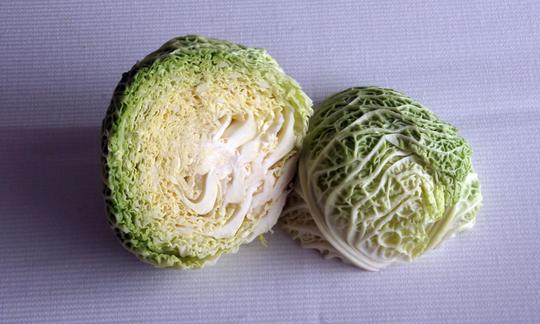

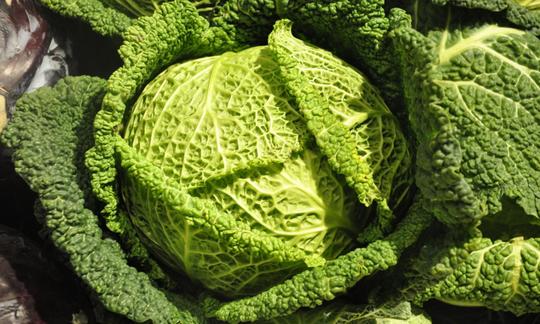

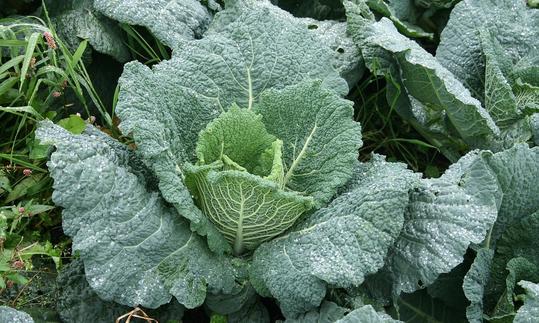

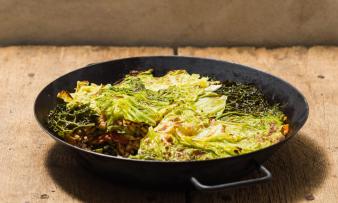
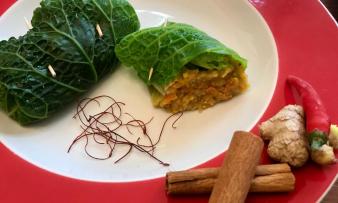
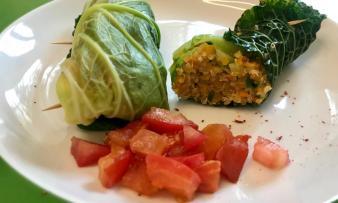





Comments